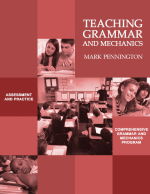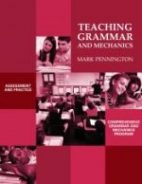Why and How to Teach Complex Text
A growing body of research presents a challenge to current K-12 reading/English-language Arts instruction. In essence, we need to “up” the level of text complexity and provide greater opportunities for independent reading. The Common Core State English-language Arts Standards provides a convincing three-reason argument in support of these changes in instructional practice. Following this rationale, I will share ten instructional implications and address a few possible objections.
1. Text complexity is the most important variable in reading comprehension. The level of difficulty is a more important variable in reading comprehension than is a reader’s degree of mastery of inferential reading strategies or critical thinking skills. In other words, what you read is more of an issue than how you read. Now applying reading strategies and critical thinking skills can certainly scaffold a reader’s ability to comprehend difficult text, but vocabulary, text organization, and sentence length seem to be more crucial variables.
From the Common Core State English-language Arts Standards Appendix A…
In 2006, ACT, Inc., released a report called Reading Between the Lines that showed which skills differentiated those students who equaled or exceeded the benchmark score (21 out of 36) in the reading section of the ACT college admissions test from those who did not. Prior ACT research had shown that students achieving the benchmark score or better in reading—which only about half (51 percent) of the roughly half million test takers in the 2004–2005 academic year had done—had a high probability (75 percent chance) of earning a C or better in an introductory, credit-bearing course in U.S. history or psychology (two common reading-intensive courses taken by first-year college students) and a 50 percent chance of earning a B or better in such a course.
Surprisingly, what chiefly distinguished the performance of those students who had earned the benchmark score or better from those who had not was not their relative ability in making inferences while reading or answering questions related to particular cognitive processes, such as determining main ideas or determining the meaning of words and phrases in context. Instead, the clearest differentiator was students’ ability to answer questions associated with complex texts. Students scoring below benchmark performed no better than chance (25 percent correct) on four-option multiple-choice questions pertaining to passages rated as “complex” on a three-point qualitative rubric described in the report. These findings held for male and female students, students from all racial/ethnic groups, and students from families with widely varying incomes.
2. Post K-12 text complexity in college, the workplace, and in popular media has remained constant or increased in terms of levels of difficulty over the last fifty years.
From the Common Core State English-language Arts Standards Appendix A…
Research indicates that the demands that college, careers, and citizenship place on readers have either held steady or increased over roughly the last fifty years. The difficulty of college textbooks, as measured by Lexile scores, has not decreased in any block of time since 1962; it has, in fact, increased over that period (Stenner, Koons, & Swartz, in press). The word difficulty of every scientific journal and magazine from 1930 to 1990 examined by Hayes and Ward (1992) had actually increased, which is important in part because, as a 2005 College Board study (Milewski, Johnson, Glazer, & Kubota, 2005) found, college professors assign more readings from periodicals than do high school teachers. Workplace reading, measured in Lexiles, exceeds grade 12 complexity significantly, although there is considerable variation (Stenner, Koons, & Swartz, in press). The vocabulary difficulty of newspapers remained stable over the 1963–1991 period Hayes and his colleagues (Hayes, Wolfer, & Wolfe, 1996) studied.
3. K-12 text complexity has declined over the last fifty years.
From the Common Core State English-language Arts Standards Appendix A…
Despite steady or growing reading demands from various sources, K–12 reading texts have actually trended downward in difficulty in the last half century. Jeanne Chall and her colleagues (Chall, Conard, & Harris, 1977) found a thirteen year decrease from 1963 to 1975 in the difficulty of grade 1, grade 6, and (especially) grade 11 texts. Extending the period to 1991, Hayes, Wolfer, and Wolfe (1996) found precipitous declines (relative to the period from 1946 to 1962) in average sentence length and vocabulary level in reading textbooks for a variety of grades… Carrying the research closer to the present day, Gary L. Williamson (2006) found a 350L (Lexile) gap between the difficulty of end-of-high school and college texts—a gap equivalent to 1.5 standard deviations and more than the Lexile difference between grade 4 and grade 8 texts on the National Assessment of Educational Progress (NAEP).
http://www.corestandards.org/
Ten Implications for K-12 Instruction
1. Higher Expectations
Clearly, we teachers need to “up” the level of difficulty of text and provide the scaffolds students need to understand that text. We need to challenge our students to struggle a bit. We can’t focus all of our instruction on the lowest common denominators.
2. Vocabulary
We need to use a systematic approach to vocabulary instruction including teaching structural analysis, context clues, and rote memorization and practice in what Isabel Beck calls “Tier Two” words that have high utility and applicability in academic language. Our students have got to master frequently used Greek and Latin affixes and roots.
3. Sentence and Text Structure
We need to not only analyze sentence and text structure, but also practice variations and complexities in our students’ writing. Good writers are better equipped to understand the complexities of how ideas are presented in academic text. The reading-writing connection is teachable.
4. Content
We need to teach the prior knowledge that students need to access difficult text independently. And we need to share and coordinate the load with our colleagues. For example, are our novels, poetry, and writing assignments aligned with what our students are learning in their history classes? We need to work smarter, not harder.
5. Reading Strategies
We need to be both content and process-driven. If we do not provide the tools and practice for our students, “reading to learn” will never work. Our elementary colleagues have largely handled the “learning to read,” but we need to apply the basic to the complex.
6. Critical Thinking
We need to teach the elements of logic and higher order thinking are prerequisites to understanding difficult reading text. Recognizing both solid and fallacious reasoning is an essential reading skill.
7. Expository Text
We need to put aside our exclusive love of literature and poetry for the sake of our students. College, workplace, and popular media texts are overwhelmingly expository in nature. We can do both.
8. Novel Selection
We may need to let go of traditional novels. Let’s take a hard look at what we are teaching to maximize content and process instruction. For example, Reading Roll of Thunder, Hear My Cry may cover the content and standards nicely for an eighth grade ELA class, but the largely fifth grade reading level does not provide the text complexity that our students need. Additionally, shorter novels, selections, poems, articles, etc. will do the job more efficiently and with greater variety.
9. Differentiated Instruction
We need to recognize that all of students simply do not read at the same levels. Students have different reading issues that inhibit their abilities to comprehend challenging text. We have to find out who has what issues and adjust our instruction accordingly. It does no good to play the “blame game” on previous teachers. We teach standards, but we also teach students. Diagnostic reading assessment has got to be a given for the conscientious reading/ELA teacher.
10. Independent Reading
We need to stop being co-dependents. The Common Core emphasis on CLOSE READING STRATEGIES can can be overdone. We do have to transfer the demands of accessing text over to students at some point. Plus, we need to fight the hard fight and require students to read at home. The amount of independent reading needed to increase even one grade level in terms of reading comprehension and vocabulary development necessitates reading at home.
Possible Objections and Howevers
We can certainly question the adequacy and accuracy of the tools used to measure text complexity. However, we all know that our students’ biology textbooks are more difficult than the Manga and Twilight that are students are reading.
What about the joy of reading? We want to create lifelong readers, not factory-trained automatons for the needs of academia, the workplace, and popular media. Reading trash can be entertaining. However, text complexity does not preclude reading for fun. The ability to read and understand more complex text should expand and enhance that experience.
What we teach in K-12 is in-it-of-itself valuable and relevant to the needs of our students. It may also be foundational in terms of content and process for greater text complexity. We are not just training students for future college, careers, and citizenship; we are teaching students now. However, can’t we have our cake and eat it, too? If our students need to know about chimpanzee behavior, can’t we replace Curious George with a scientific journal?

The Science of Reading Intervention Program
The Science of Reading Intervention Program: Word Recognition includes explicit, scripted instruction and practice with the 5 Daily Google Slide Activities every reading intervention student needs: 1. Phonemic Awareness and Morphology 2. Blending, Segmenting, and Spelling 3. Sounds and Spellings (including handwriting) 4. Heart Words Practice 5. Sam and Friends Phonics Books (decodables). Plus, digital and printable sound wall cards and speech articulation songs. Print versions are available for all activities. First Half of the Year Program (55 minutes-per-day, 18 weeks)
The Science of Reading Intervention Program: Language Comprehension resources are designed for students who have completed the word recognition program or have demonstrated basic mastery of the alphabetic code and can read with some degree of fluency. The program features the 5 Weekly Language Comprehension Activities: 1. Background Knowledge Mentor Texts 2. Academic Language, Greek and Latin Morphology, Figures of Speech, Connotations, Multiple Meaning Words 3. Syntax in Reading 4. Reading Comprehension Strategies 5. Literacy Knowledge (Narrative and Expository). Second Half of the Year Program (30 minutes-per-day, 18 weeks)
The Science of Reading Intervention Program: Assessment-based Instruction provides diagnostically-based “second chance” instructional resources. The program includes 13 comprehensive assessments and matching instructional resources to fill in the yet-to-be-mastered gaps in phonemic awareness, alphabetic awareness, phonics, fluency (with YouTube modeled readings), Heart Words and Phonics Games, spelling patterns, grammar, usage, and mechanics, syllabication and morphology, executive function shills. Second Half of the Year Program (25 minutes-per-day, 18 weeks)
The Science of Reading Intervention Program BUNDLE includes all 3 program components for the comprehensive, state-of-the-art (and science) grades 4-adult full-year program. Scripted, easy-to-teach, no prep, no need for time-consuming (albeit valuable) LETRS training or O-G certification… Learn as you teach and get results NOW for your students. Print to speech with plenty of speech to print instructional components.
SCIENCE OF READING INTERVENTION PROGRAM RESOURCES HERE for detailed product description and sample lessons.






